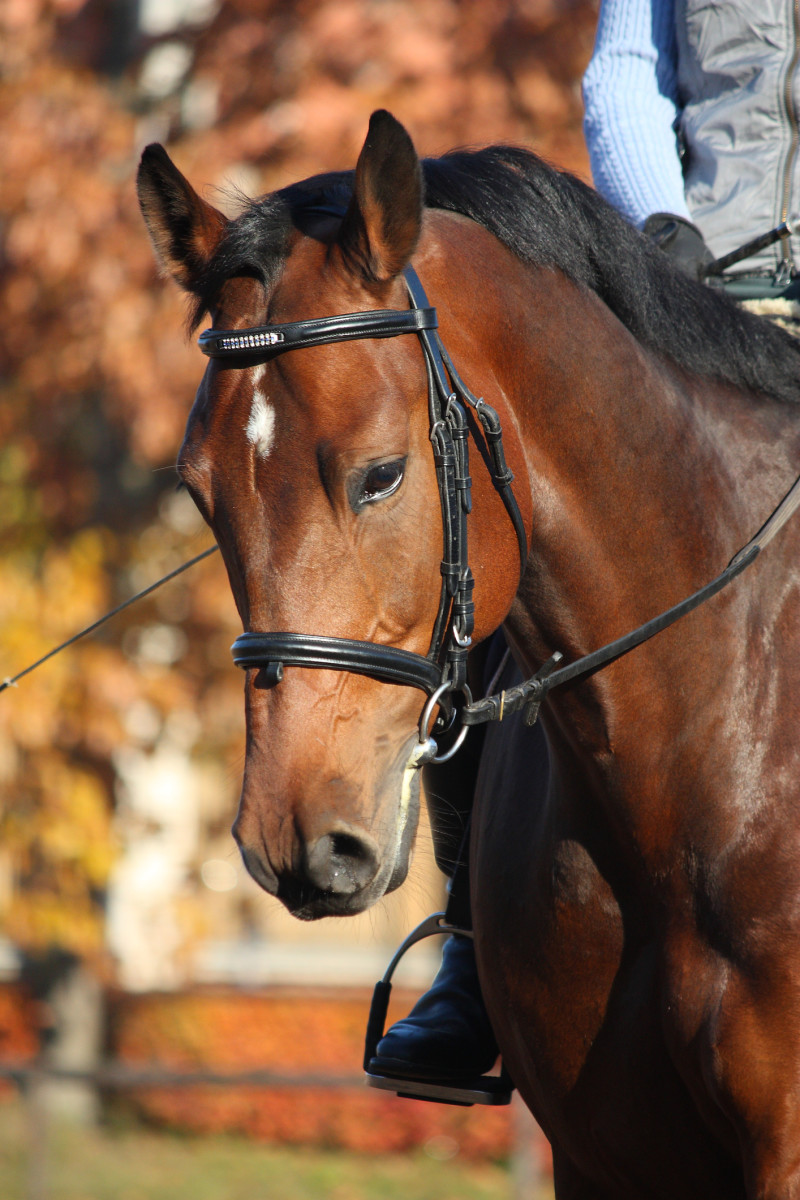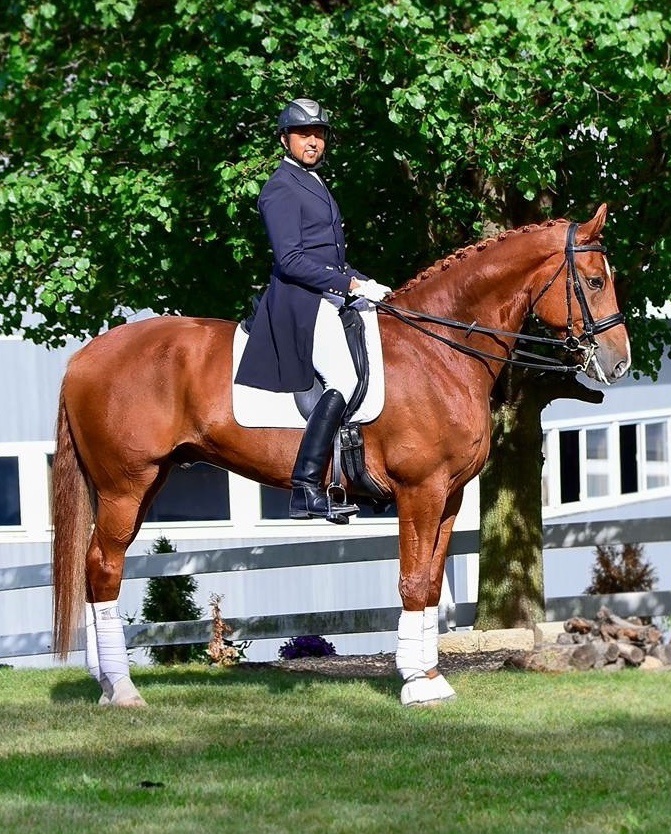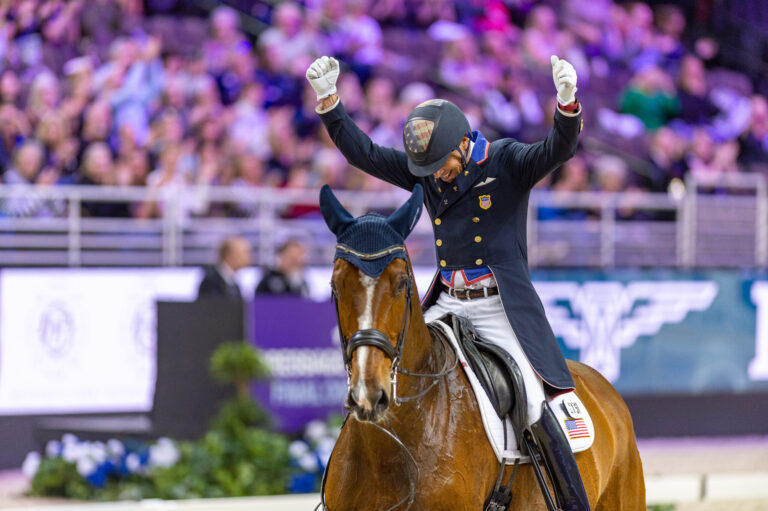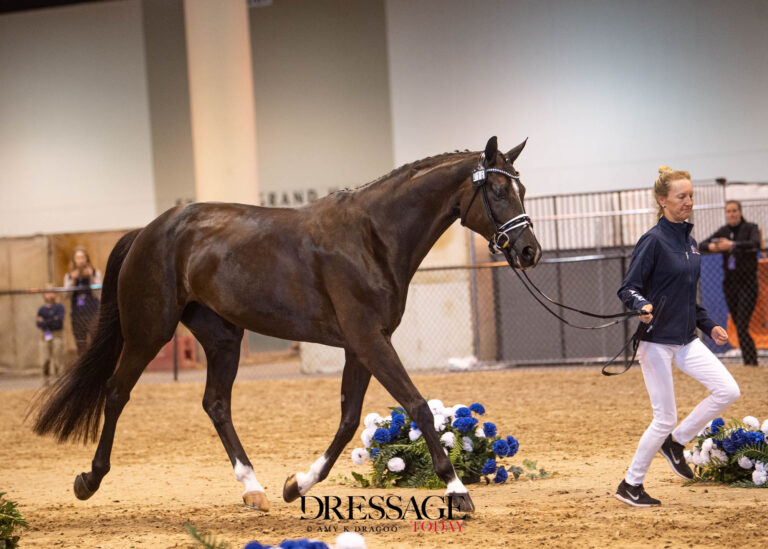Q: I recently observed a trainer school her Andalusian stallion with two dressage whips, one in each hand. I was taught to ride with one whip only. In what situations would it be helpful to have two whips? And when riding with just one whip, please tell me which hand is correct and clarify the appropriate time(s) to use the whip. —Julienne Kerry of Huntington, Pa.
A: I can give some insight on the use of aids, which I hope will help you in your training. In France, we classify the aids of the rider into two categories—natural aids and artificial aids. Natural aids consist of a rider’s hands, legs, seat, weight and voice. Artificial aids consist of factory-created items, such as spurs, whips, draw reins, etc. The goal of the natural aids is to communicate with the horse and to tell him what we want. The artificial aids are there to reinforce or clarify the use of the natural aids when needed.

In true classical training you never use two whips. Traditionally, a rider uses only one whip and carries it on the inside. Depending on the situation, the rider may find it more useful to carry it on a specific side, not just the inside. For example, when leg yielding from left to right across the diagonal, I prefer to hold my whip in my left hand, in case I need to reinforce the obedience to my left leg. But, when I perform a half pass from left to right across the same diagonal, I prefer to carry the whip in my right hand, in case I need to reinforce the obedience to my right leg, which asks the right hind leg for more engagement and, as a consequence, improves the right bend of my horse. In this situation, it is the nature of the exercise and the level of the horse that determine in which hand I will carry the whip.
Next, a rider must know that the timing of the whip is as important as the use in itself. You must use the whip exactly when the hind leg of the same side is ready to lift and leave the ground. It will allow the whip to produce a full result in harmony with the horse while requiring minimum effort. This is very important. If the rider uses the whip at the wrong time, for example when the hind leg of the same side is going down, the horse is physically not capable of responding to the whip appropriately. It creates a contradiction between the effect and the unexpected results, confusing the horse and making him upset and nervous.
Another important detail is the association of the use of the whip with the simultaneous use of the leg on the same side. If the rider uses the whip alone, he teaches the horse to respond to the whip only, without associating it with the leg aid. This will not reinforce the response to the leg. As with any artificial aid, the whip is meant to reinforce the natural aids. Its intended use is not to replace the leg. Be sure to follow a very specific protocol when using the whip to ensure your horse does not become dependent on the whip and forget about your natural aids.
As a general rule, always use your natural aids first, and then reinforce with artificial aids if the horse doesn’t respond to the natural aids. Personally, if the horse is not responsive to the natural aids, I go back a step and require that all the basics be in place before asking for a particular movement. Being responsive correctly to the natural aids is part of having good basics.
When teaching a horse to be sensitive to the aids, it’s important that the natural aids are used sparingly—only when needed. If you push your horse with your legs at every stride, he will become dependent on a “loud” aid. The horse will quit when the aid is removed. Imagine a person who is talking to you non-stop. After a while, you stop listening. So make it a rule to “whisper” to your horse, only talk when you have something necessary to say to him, and then leave him alone. When a horse has been taught this way, he is a real pleasure to ride.
An exercise I like to use when I suspect a student’s horse has become dependent on constant aids is this: I ask her to canter and, while she is cantering, I ask her to take her legs off of the horse. If the horse is dependent on her legs, he’ll break into trot. If he is responsive to the aids, he’ll keep cantering.
The whip is a fine tool that should be used carefully. The rider must use it correctly to have a positive response. The use of the whip—like the use of all aids—should follow the old adage “less is more.” With a well-trained horse, the whip is just hanging by the rider’s side but comes into use very rarely.

Pierre Cousyn is a graduate of the National Equitation School in Saumur, France, where he earned degrees as a Moniteur and Instructeur. He was a successful competitor in France, Switzerland and Germany and is now a popular clinician based in Florida (www.cousyndressage.com).











